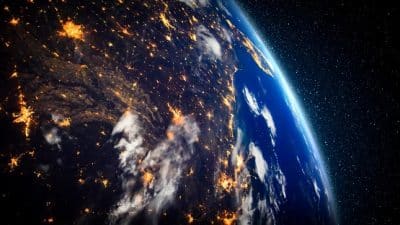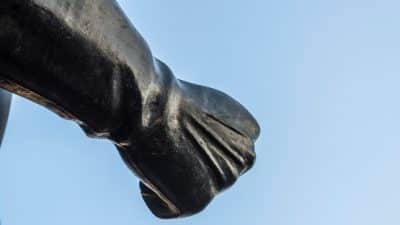
There are a lot of reasons why 40 years of Bay-saving hasn’t saved the Chesapeake Bay, but a dismaying example was on display recently in my hometown of Federalsburg, Md.
Maryland’s Department of Environment (mission: “to protect and restore the environment”) showed it is willing to gamble with the fate of the Maryland Chesapeake’s last 30 or so giant, federally endangered Atlantic sturgeon, which are still spawning there against all odds.
At a public hearing, MDE proposed letting an enormous salmon aquaculture operation, untested at this scale, discharge millions of gallons of “purge” water daily into the shallow and narrow Marshyhope Creek, a main tributary of the Nanticoke River. A single day’s discharge at times will be nearly a sixth of the creek’s volume.
Of the Chesapeake’s estimated 11,000 miles of tidal shoreline, you’d be hard put to find a worse spot for a discharge of that magnitude. Some fisheries scientists are calling it an “existential threat” to the ancient, 10-foot-long sturgeon, genetically unique even among others of their species that hang on in Atlantic river systems elsewhere.
David Secor, a University of Maryland scientist who has spent a decade studying the Marshyhope sturgeon, acknowledged that “existential threat” is a bold term. “But this is the smallest spawning population of [its] kind in the world,” he said, “highly inbred, very sensitive to environmental perturbations, just on a knife’s edge.”
Atlantic sturgeon, which spend most of their decades-long lives roaming the coastal ocean, returning in autumn to their birthplace in little Federalsburg, “have no choice where to be … but AquaCon [the Norwegian company behind the project] does,” Secor said.
At first glance, the company’s proposal looks decent. Fish wastes will be recirculated and used to generate power, and deep wells will mean no water is withdrawn from the creek. A building the size of several football fields in the town industrial park will employ hundreds, pumping out an estimated 35 million pounds of nutritious Atlantic salmon a year.
Indeed, many among the 23 citizens and representatives of environmental groups who voiced opposition said the project is a welcome alternative to the open-water pen raising of salmon that has introduced disease into wild fish. It is just in a horribly wrong place.
Even the lone supporter, AquaCon’s consultant, told me after the hearing that he had warned the company “this is a bad place to try to put it … very sensitive.” That consultant, Yonathan Zohar, is the respected, longtime director of aquaculture research at the University of Maryland’s Institute of Marine and Environmental Technology.
Something else he said publicly: “In three or four years, the way the technology is progressing, I think we won’t even need to discharge [water into the river].”
The discharge — the 2 million-plus gallons a day of cold water that is the subject of the MDE permit — is needed now because the salmon must be “purged” of bacteria that makes them taste bad.
Why not wait a few years until this aquaculture technology is perfected?
If we lived in a world where Murphy’s Law never applied, where “unexpected” was not in our vocabulary, maybe AquaCon’s salmon and the sturgeon could peacefully coexist. But we live in a world where even the best aquaculture operations are subject to electrical outages, broken pipes and massive die-offs of fish crowded into tanks. The modern poultry industry, even with its long experience raising crowded animals, would not guarantee that diseases and big chicken die-offs would never happen.
AquaCon’s salmon factory is on the bleeding edge of large scale for their technology, and they plan to scale up rapidly — even though neither they nor anyone else has done this before near a small and sensitive creek like the Marshyhope.
The tonnage of salmon expected from the plant is about three times greater than Maryland’s entire blue crab harvest from the Chesapeake. A die-off could present the small sewage treatment plant in Federalsburg with the need to treat millions of gallons of contaminated water, something for which no plan yet exists.
AquaCon and MDE make much of the fact that they are locating the discharge outside the sturgeon spawning area. But as state biologists have told MDE, the true spawning area extends upstream a mile or more beyond the discharge.
The fact is, we are still learning about these great old fish, which have presumably kept returning for thousands of years to the gravely bottoms that provide the perfect substrate for their eggs.
We did not know they were still here until a 5-footer several years ago jumped into a surprised carp fisherman’s skiff near Federalsburg. We then learned that despite historical evidence of Chesapeake sturgeon spawning in spring, the Marshyhope fish come back in the fall.
We have a notion of how impossible it might be to restore this unique group if we lost them. In 1997, the state released thousands of baby sturgeon of Hudson River origin into the Nanticoke. They seemed to be thriving, but none ever came back to spawn.
This year is half a century since the Clean Water Act was passed almost unanimously by Congress. It had a goal of zero discharge of pollution to the nation’s waters by 1985.
Zero discharge. When’s the last time you heard that?
Here we are, 50 years down the road to cleaner water, with real progress, but with Maryland still all too willing to gamble a few hundred jobs against extinction — and on a river where hundreds of millions of dollars in state, federal and private money have been spent to create one of the Bay’s least spoiled waterways.
“We can’t save the sturgeon with business as usual,” said Mike Naylor, a biologist who testified.
He could have substituted “Chesapeake Bay” for “sturgeon.”
Tom Horton, a Bay Journal columnist, has written many articles and books about the Chesapeake Bay, including Turning the Tide and Island Out of Time. He currently teaches writing and environmental topics at Salisbury University. His views do not necessarily reflect those of the Bay Journal. This article first appeared in the September 2022 issue of the Bay Journal and was distributed by the Bay Journal News Service.








